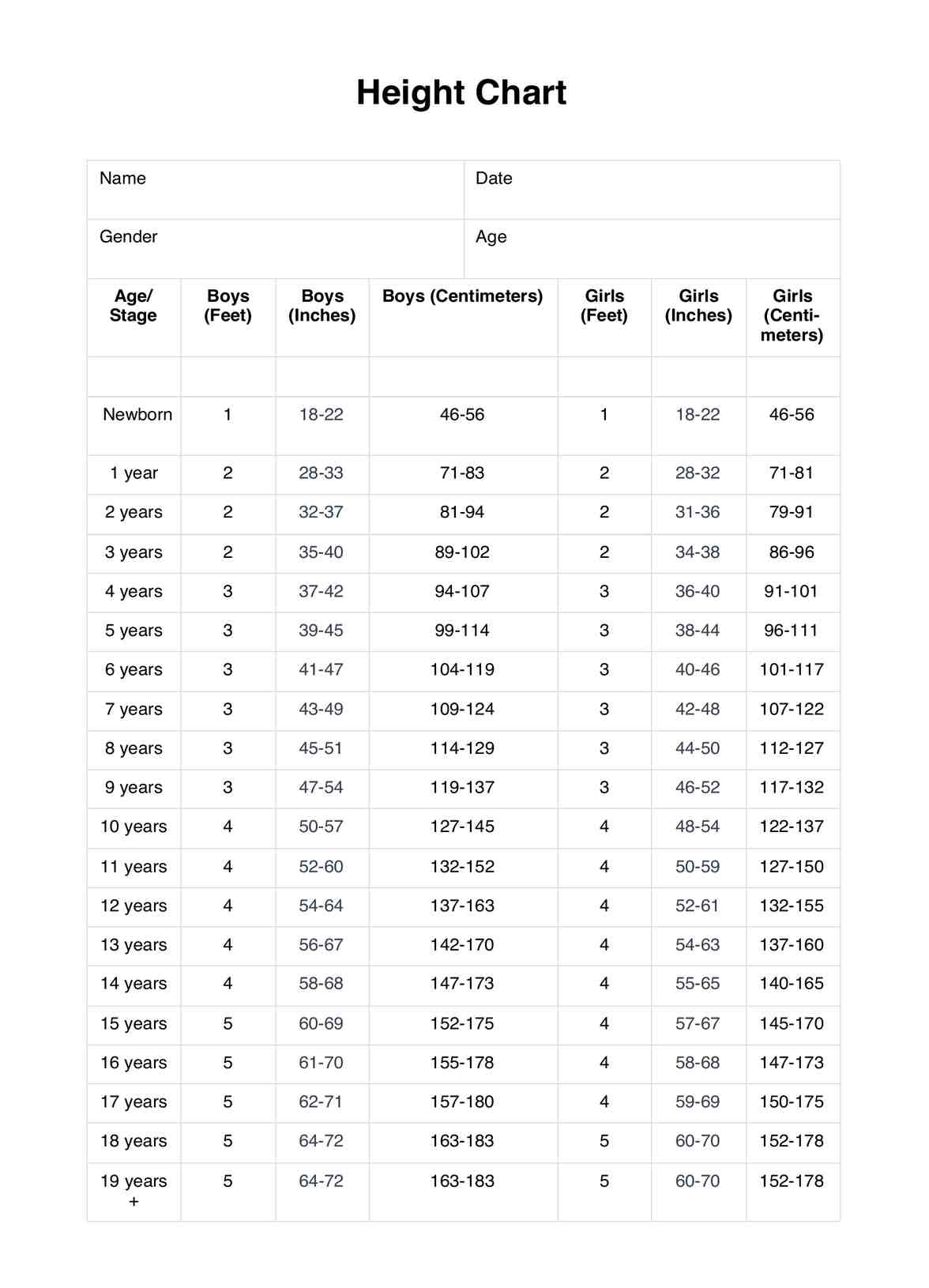To read a height chart, you first need to understand the units of measurement used. Most commonly, height charts use feet and inches or centimeters. It is common for children under two years old to use baby height charts that measure in inches or centimeters.

Height Chart
Learn more about height charts and the importance of tracking growth. Download the free PDF template and example here.
Height Chart Template
Commonly asked questions
The best marker for wooden growth charts would be a permanent marker. This will ensure that the measurements and marks on the chart do not fade or smudge over time. You can also use stickers or vinyl decals to mark the chart, but make sure they are durable and long-lasting.
Yes! You can add sections and more data to the Height Chart template to suit your practice's needs. This is especially useful to track other growth factors such as head circumference, weight, or BMI.
EHR and practice management software
Get started for free
*No credit card required
Free
$0/usd
Unlimited clients
Telehealth
1GB of storage
Client portal text
Automated billing and online payments











